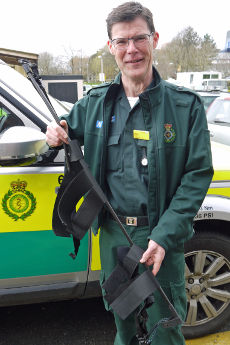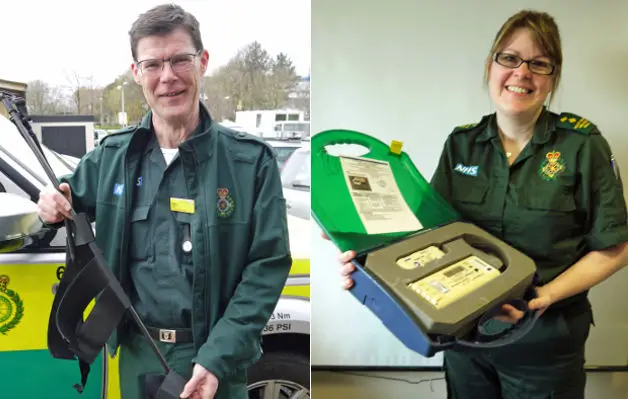George shares this latest new on behalf of Friends of St Mary’s Hospital. Ed
The Friends of St Mary’s Hospital have spent nearly £24,000 on two types of important additional equipment for Island ambulances.
The largest expenditure by the charity, amounting to £20,950, was to enable ambulances to have a sophisticated fluid warmers, to ensure intravenous  fluids are delivered to patients at an optimum temperature. The warmers are already used by some mainland ambulance services, helicopter rescue teams and the military.
fluids are delivered to patients at an optimum temperature. The warmers are already used by some mainland ambulance services, helicopter rescue teams and the military.
Joanne Barry (pictured), a Clinical Support Officer with the ambulance service, thanked the Friends for their generosity, adding:
“All frontline ambulance staff are currently undergoing training, with the aim their vehicles each being equipped with a fluid warmer. They will improve patient care in numerous situations, including in cases of severe hypothermia where use of the ambulance’s blankets and heating system prove inadequate.”
20 traction splints
At a cost of £3,000, the Friends have also provided 20 traction splints for the ambulances, to relieve excruciating pain from certain leg fractures. Paramedic Mike Wigley (pictured) explained that essential pre-hospital treatment for someone suffering a mid-shaft femur fracture is to relieve the pain through a combination of pain relief and ‘splintage’.
He said,
“Splintage is particularly important, as separating the fracture bone fragments provides significant pain relief and reassurance for the patient.
“If a bone is shattered in half the leg muscles immediately pull the bones together, and it really hurts.”
The splint, he said, was somewhat similar to an extendable tent pole, from which  there are straps.
there are straps.
He recalled how such a split would have been most useful in the case of a woman who had broken her femur at Ryde Pier.
“She was allergic to morphine, so you can just imagine the pain she had.
“Our ambulance staff are now undergoing training on how to use the traction splints, with the help of a company video. The equipment is quite common-place on mainland ambulances, and we are most grateful to the Friends for bringing our vehicles up-to-date.”





